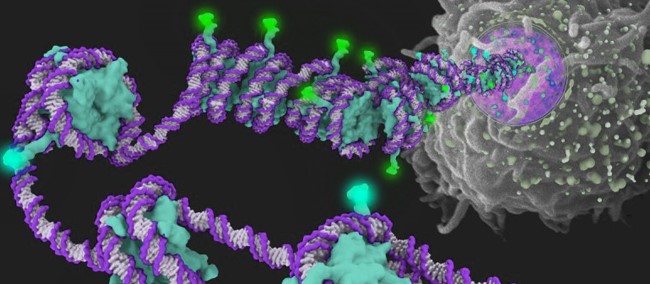
DNA exists within every cell in the body, but it’s packaged differently in each cell type or tissue. The bundled-up DNA is called chromatin, and its configuration helps regulate gene expression. It does this by allowing transcription to take place along specific DNA regions as needed during its lifecycle. Thus, cells must be able to control chromatin’s structure and remodeling capabilities to function correctly.
However, disruptions in a cell’s microenvironment, as in disease, can upset the mechanisms that control chromatin. In addition, prolonged disruptions could eventually cause the altered cells to stop responding to environmental cues, even after the conditions have normalized.
To better understand why this occurs, researchers at the University of Pennsylvania’s (UPENN) Perlman School of Medicine decided to investigate cells in degenerating connective tissue due to tendinosis. Specifically, they were interested in learning how environmental changes brought on by the disease affected the spatial organization of chromatin. Their findings were published in the August 22 issue of Nature Biomedical Engineering.
Epigenetic processes like DNA methylation, histone methylation, and histone acetylation control the compaction or accessibility state of chromatin. Relaxed or open chromatin allows transcription factors access to the DNA, while tightly packed chromatin closes off certain parts of the DNA.
In previous articles, we have discussed the importance of chromatin accessibility during early heart development and how chromatin remodeling determines the fate of bone marrow cells in aging. The current article looks at the physical structure of chromatin and how disease affects its dynamic response to external stimuli.
Using the latest super-resolution imaging methods, the team observed human models of tendon cells (tenocytes) and mesenchymal stromal cells (MSCs), which act similarly to stem cells.
When the environments were made to imitate that of a weakened or degenerative tendon via chemical and mechanical alterations, the team observed erroneous chromatin organization within the cells. After the researchers returned the environments back to normal, they also saw that the chromatin remained out of order and that the cell could no longer respond correctly.
In contrast, healthy cells tested responded well to the same chemical and mechanical stimulus, indicating that the diseased cells may have either forgotten or couldn’t find the exact information they needed to re-organize correctly.
The researchers speculate that these changes don’t allow the damaged cells to heal properly and could benefit from targeted therapies.
“While we discovered that cells in diseased microenvironments lose their epigenetic memory, these results also suggest that epigenetic treatments – like small molecule medications – could restore healthy genome organization and may prove effective treatments in conditions affecting dense tissues. That’s something that we plan to follow up on and test,” said Melike Lakadamyali, PhD, Associate Professor of Physiology at PENN and senior author.
Interestingly, the observations depicted in this study have led to a new theory that is based on two different branches of science – physics and biology.
“We were able to explain the role of mechanical forces on the 3-D organization of chromatin by developing a theory that integrates fundamental thermodynamic principles (physics) with the kinetics of epigenetic regulation (biology),” said Vivek Shenoy, PhD, co-author and director of the Penn Center for Engineering and Mechanobiology and Eduardo D. Glandt President’s Distinguished Professor at UPENN Engineering.
Already having secured the appropriate grants, the researchers plan to study how disease-disrupted genomes affect cartilage and meniscus cells. In addition, they will look into whether aging also has a similar outcome.
“Once we understand these and the specific cellular processes that makes them happen,” said Robert L. Mauck, PhD, professor of Orthopaedic Surgery and director of UPENN’s McKay Orthopaedic Research Laboratory. “We can use small molecule drugs as skeleton keys to either try to stop it from happening or reverse the process.”
Source: Su-Jin Heo, et al. Aberrant chromatin reorganization in cells from diseased fibrous connective tissue in response to altered chemomechanical cues. Nature Biomedical Engineering, August 2022.
Reference: The Locked Library: Disease Causes Cells to Reorder Their DNA Incorrectly. University of Pennsylvania School of Medicine. August 22, 2022.

